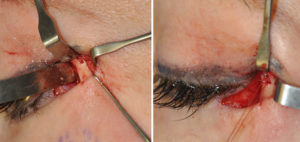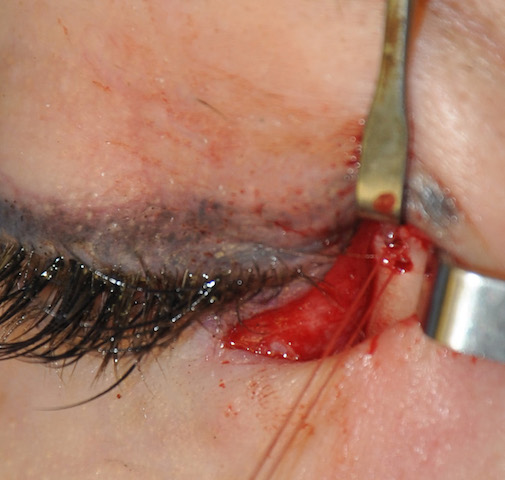The concept of a canthopexy is a surgical tightening of the outer corner of the eye. This can change both the shape of the eye as well as the tension across the lower eyelid. Int a true canthopexy the lateral canthal tendon attachment to the bone is maintained and the tendon is folded over onto itself with a suture. The success of the procedure is dependent on a release of the tarsal strap which helps hold the lateral canthus inferiorly….otherwise it will not move very much.

In the December 2019 issue of the Aesthetic Surgery Journal, an article as published entitled “Dynamic Canthopexy” Drill Hole Canthal Repositioning’. In this paper the authors review their experience is performed what they call a ‘dynamic canthopexy’. In this procedure the lateral canthus is released from its insertion and elevated to a higher position using a tranosseous drill hole suture technique giving it a new location inside the orbital rim. Permanent sutures were used. It was done on thirty (30) patient over a ten year period. Eighteen (18) of the patients had a down slanting palpebral fissure while the other twelve (12) had horizontal palpebral fissure levels and desired an upturned appearance. (almond-shaped eye)
Their results showed that the procedure was very effective in all cases. Initial over correction is to be expected and it will take some time to achieve a less over corrected look. After six months whatever result is seen is permanent. They experienced no significant complications.
The transosseous lateral canthal repositioning technique is very effective at correcting an anti-Mongolian slant as well as changing the location the outer palpebral fissure location for cosmetic purposes. While this procedure is called a dynamic canthopexy in this paper this is really a lateral canthoplasty procedure.
Dr. Barry Eppley
Indianapolis, Indiana



